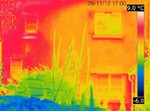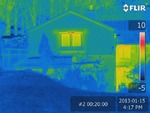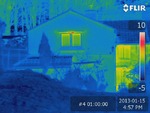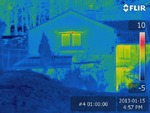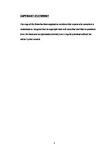Thermography Approaches for Building Defect Detection
| dc.contributor.supervisor | De Wilde, Pieter | |
| dc.contributor.author | Fox, Matthew William | |
| dc.contributor.other | Faculty of Arts, Humanities and Business | en_US |
| dc.date.accessioned | 2016-02-10T12:15:44Z | |
| dc.date.available | 2016-02-10T12:15:44Z | |
| dc.date.issued | 2016 | |
| dc.identifier | 10393962 | en_US |
| dc.identifier.uri | http://hdl.handle.net/10026.1/4304 | |
| dc.description.abstract |
Thermography is one technology, which can be used to detect thermally significant defects in buildings and is traditionally performed using a walk-through methodology. Yet because of limitations such as transient climatic changes, there is a key performance gap between image capture and interpretation. There are however new methodologies currently available, which actively address some of these limitations. By better understanding alternative methodologies, the performance gap can be reduced. This thesis contrasts three thermography methodologies (Walk-through, time-lapse and pass-by) to learn how they deal with limitations and address specific building defects and thermal performance issues. For each approach, practical methodologies were developed and used on laboratory experiments (hot plate) and real dwelling case studies. For the real building studies, 133 dwellings located in Devon and Cornwall (South West England) were studied; this sample represents a broad spectrum of construction types and building ages. Experiments testing these three methodologies found individual strengths and weaknesses for each approach. Whilst traditional thermography can detect multiple defects, characterisation is not always easy to achieve due to the effects of transient changes, which are largely ignored under this methodology. Time-lapse thermography allows the observation of transient changes from which more accurate assessment of defect behaviour can be gained. This is due to improved differentiation between environmental conditions (such as cloud cover and clear sky reflections), actual material thermal behaviour and construction defects. However time-lapse thermography is slow, complex and normally only observes one view. Walk-past thermography is a much faster methodology, inspecting up to 50 dwellings per survey session. Yet this methodology misses many potential defects due to low spatial resolutions, single (external only) elevation inspection and ignoring transient climate and material changes. The implications of these results for building surveying practice clearly indicate that for an improved defect characterisation of difficult to interpret defects such as moisture ingress, thermographers should make use of time-lapse thermography. A review of methodology practicalities illustrates how the need for improved characterisation can be balanced against time and resources when deciding upon the most suitable approach. In order to help building managers and thermographers to decide on the most suitable thermography approach, two strategies have been developed. The first combines different thermography methodologies into a phased inspection program, where spatial and temporal resolution increase with each subsequent thermography inspection. The second provides a decision-making framework to help select the most appropriate thermography methodology for a given scenario or defect. | en_US |
| dc.description.sponsorship | ESF-CUC (European Social Fund - Combined Universities of Cornwall) | en_US |
| dc.language.iso | en | en_US |
| dc.publisher | Plymouth University | en_US |
| dc.subject | Passive building thermography | en_US |
| dc.subject | Defect detection | en_US |
| dc.subject | Thermography methodologies | en_US |
| dc.title | Thermography Approaches for Building Defect Detection | en_US |
| dc.type | Thesis | |
| plymouth.version | Full version | en_US |
| dc.identifier.doi | http://dx.doi.org/10.24382/3310 |
Files in this item
This item appears in the following Collection(s)
-
01 Research Theses Main Collection
Research Theses Main


